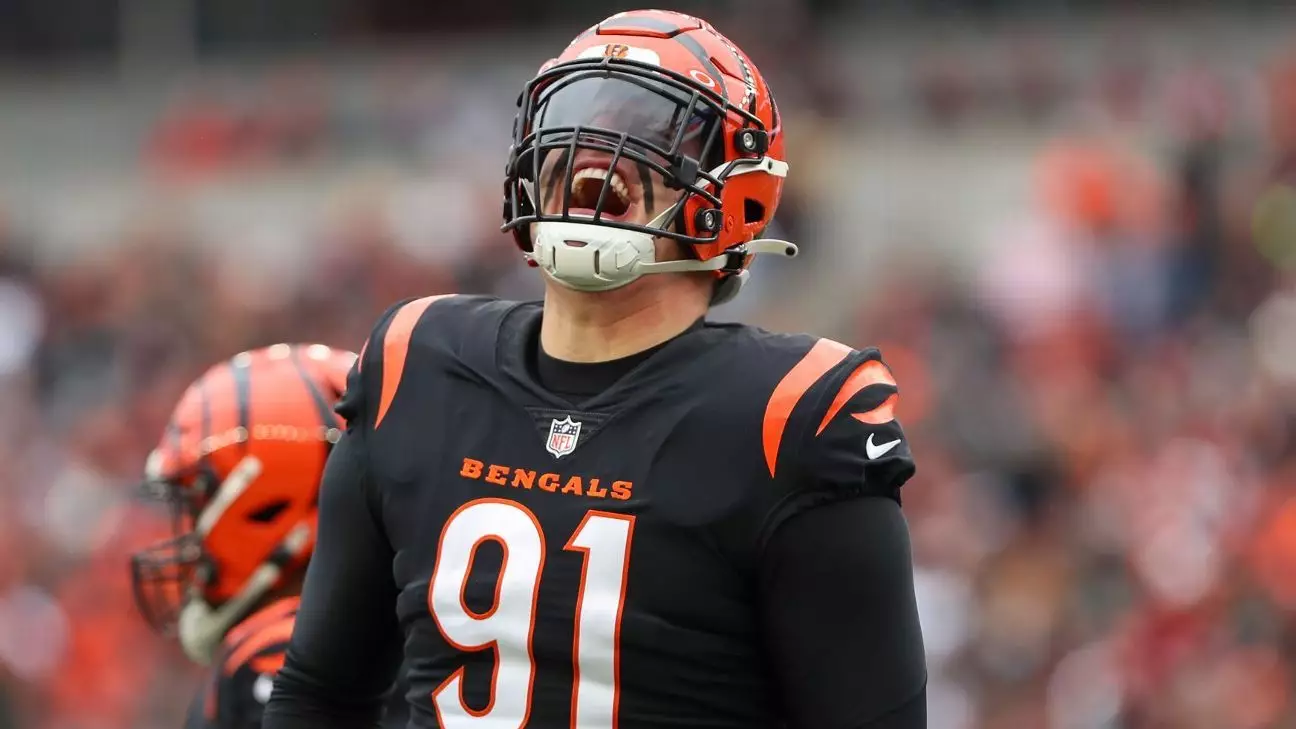The world of professional sports is not just about athleticism; it’s a complex blend of performance, business negotiations, and interpersonal dynamics. This reality is starkly portrayed in the ongoing contract saga involving Cincinnati Bengals defensive end Trey Hendrickson. Recently, Hendrickson publicly announced that communication has effectively broken down between his camp and the Bengals regarding a new contract, asserting that the discussions initiated before the NFL draft have come to a standstill. His frustrations highlight the often-overlooked human element behind the statistics and strategic decisions.
Hendrickson’s claims that the offers from the Bengals “did not reflect the vision we shared and were promised” indicate a palpable disconnect not only in negotiations but also in expectations. Athletes invest years of their lives into honing their abilities, often under immense pressure, and to feel undervalued by the very organization they represent can be disheartening. When these professional players strive for recognition, the last thing they need is to feel unheard. This predicament begs the question: How do organizations maintain relationships with invaluable players amidst the pressures of financial constraints and business strategy?
The Weight of Performance
At the age of 30, Hendrickson is stepping into the final year of a contract that has already paid dividends for the Bengals. Coming off a remarkable season in which he led the league with 17.5 sacks and earned a place on the prestigious All-Pro team, Hendrickson solidified his value. His performance not only earned him individual accolades but raised the expectations for compensation that reflect his contributions to the team’s success. The situation highlights a frustrating paradox inherent in the NFL: the better a player performs, the more complicated contract negotiations can become.
What Hendrickson has experienced—being sidelined in discussions despite stellar performance—raises questions about how organizations prioritize their player relationships. Bengals executive Katie Blackburn’s comments during the NFL’s meeting, implying that Hendrickson’s happiness should be contingent on his acceptance of the offers presented, serve as a stark reminder that financial negotiations are rarely one-sided. Here’s a player, dedicated and at the peak of his career, feeling dismissed during a pivotal moment.
Frustration in Communication
The term “communication breakdown” is often bandied about in sports, but Hendrickson’s case exemplifies just how detrimental this disconnect can be. His statement about the lack of direct dialogue with the Bengals’ management underscores the need for transparency in negotiations. It illustrates that the path to a mutually beneficial agreement is fraught with tension and misunderstandings when clear communication is lacking.
Moreover, Hendrickson’s disappointment in Blackburn’s comments is particularly telling. It raises the larger issue of accountability within franchise leadership. How leaders handle communication can shape the culture within both a locker room and a business. Poor communication erodes trust, and in the high-stakes world of the NFL, trust is currency. This ultimately discourages players from engaging openly and can lead to further rifts, especially when financial security is on the line.
A Growing Urgency
The urgency of reaching a resolution cannot be understated, especially with the Bengals preparing for organized team activities. Hendrickson has expressed that he is not seeking to become the highest-paid defensive end—a significant departure from a climate that often pits players against each other in a competition for financial supremacy. Rather, he emphasizes a desire for acknowledgment of his worth and contributions to the franchise’s trajectory. As he approaches an important season, the implications of this contract saga reach far beyond financials—hanging in the balance is his role in shaping the Bengals defense.
Additionally, Hendrickson is not alone in this predicament. New recruits like Shemar Stewart are also grappling with their own contract disputes. This wider context adds complexity to the Bengals’ negotiation landscape. Navigating contract talks in a team setting can be tricky, especially with multiple players seeking extensions or new deals simultaneously.
In a competitive league, teams and agents must tread carefully to uphold morale within the team while also addressing the contractual needs of their players. The balance between business and benevolence is precarious, and the Bengals must recognize the importance of maintaining resonance with their athletes. As Hendrickson awaits a resolution, the ball is firmly in the Bengals’ court, and the path forward hinges on building a bridge of communication—a crucial element that has thus far eluded both parties.


Leave a Reply